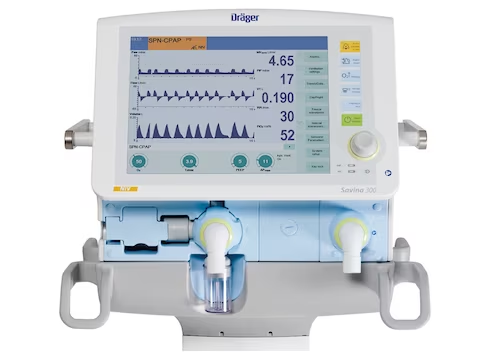Introduction
Despite being an essential component in modern medicine, ventilators can often remain mysterious to non-medical people. These devices are unsung heroes in the struggle against respiratory failure, helping patients with long-term respiratory conditions and even saving lives in intensive care units (ICUs). This blog will provide you with an interesting and simple explanation of how ventilators operate and why they are so important.
 |
What is a Ventilator?
Fundamentally, a ventilator is a device that assists or takes the place of breathing naturally. By ensuring a constant supply of oxygen to the body and the elimination of carbon dioxide, ventilators act like a bridge to recovery for people who are unable to breathe enough on their own because of disease, trauma, or surgery.
There are several different types of ventilators, that range from portable home appliances to advanced intensive care unit units. Maintaining proper gas exchange in the lungs is their fundamental objective, regardless of the setting.
 |
| Image Credit |
How Does a Ventilator Work?
Ventilators work by delivering pressurized air or a mixture of air and oxygen through a tube placed in the patient’s airway (invasive ventilation) or via a mask (non-invasive ventilation). They operate based on key principles:
Pressure: Ensures that the lungs inflate and deflate effectively.
Volume: Delivers a specific amount of air with each breath.
Rate: Controls how many breaths the ventilator delivers per minute.
These variables can be adjusted depending on the patient’s condition and needs, making ventilators versatile tools in medical care.
Why Are Ventilators So Important?
Ventilators are more than just machines; they are lifelines. During the COVID-19 pandemic, they became symbols of hope, as they were vital for patients suffering from severe respiratory distress. Beyond emergencies, ventilators play a key role in managing chronic conditions such as:
Chronic obstructive pulmonary disease (COPD)
Neuromuscular disorders like ALS
Post-surgical recovery
For healthcare providers, ventilators are invaluable in saving lives and giving patients a fighting chance.
 |
| Image Credit |
A Glimpse into Ventilator Modes
Ventilator modes determine how the machine supports breathing. While we’ll dive deeper into this topic in upcoming blogs, here’s a teaser:
Assist-Control (AC): A mode where the ventilator provides full support with each breath.
Synchronized Intermittent Mandatory Ventilation (SIMV): Balances machine-delivered and spontaneous breaths.
Continuous Positive Airway Pressure (CPAP): Maintains airway pressure without initiating breaths.
Stay tuned for an in-depth exploration of these modes and more!
.jpeg)

No comments:
Post a Comment